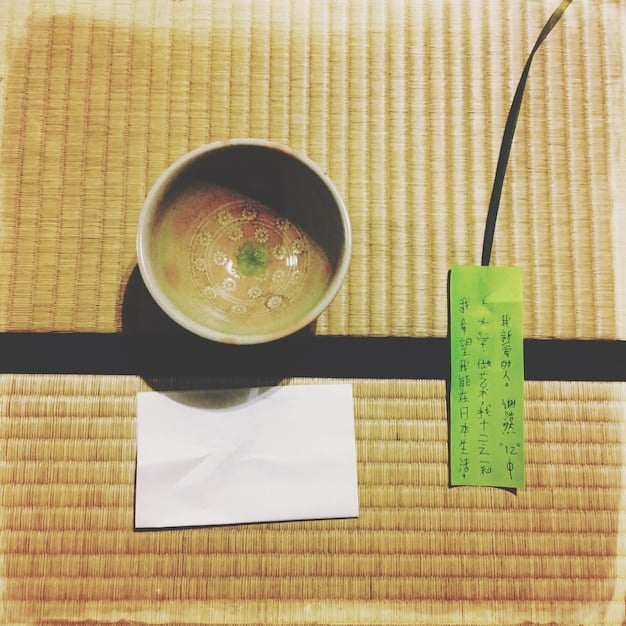Decoding Japanese Food Labels: US Allergy Guide

Navigating Japanese food labels in the US environment requires understanding specialized terminology and allergen declarations to ensure safe and compliant dietary choices for American consumers.
For US shoppers with dietary restrictions or allergies, decoding Japanese food labels: a US shopper’s guide to avoiding allergens and dietary restrictions is not merely a convenience, but a crucial skill. The intricate world of Japanese ingredients and labeling conventions can pose significant challenges, making informed choices essential for health and peace of mind.
Understanding the Japanese Labeling System
Navigating the Japanese food labeling system requires a foundational understanding different from what many US shoppers are accustomed to. Unlike the standardized English and bold allergen statements frequently found in American products, Japanese labels often use specific kanji and katakana characters to denote ingredients, processes, and potential allergens. This can be a significant hurdle for those unfamiliar with the language, accentuating the need for comprehensive guidance.
Understanding the unique aspects of Japanese food product labeling is more than just a linguistic challenge; it’s about cultural and regulatory differences. While the global food industry strives for greater transparency, each country maintains its own specific guidelines. For American consumers, this implies a proactive approach to research and interpretation, rather than relying solely on intuitive understanding.
Key Differences in Labeling Conventions
The divergence in labeling practices between Japan and the US extends beyond language. There are fundamental differences in how information is prioritized and presented. Key distinctions include:
- Allergen Declaration: While Japan has mandatory allergen declarations, the list of specified allergens may differ from the US “Top 9” allergens. Discovering where these are placed and how they are identified is crucial.
- Ingredient Order: Ingredients are typically listed by weight, from largest to smallest, similar to US regulations. However, the specific names for common ingredients might not be immediately recognizable.
- Additives and Processed Ingredients: Japanese labels often provide detailed information on various food additives, thickeners, and flavor enhancers, which can be challenging to decipher without specific knowledge.
Decoding Basic Label Components
Mastering the art of reading Japanese food labels involves familiarizing oneself with common terms and phrases. This often means learning a handful of key kanji characters that consistently appear on packaging. Many labels also include numerical codes or pictograms that can offer clues, though these are less standardized than language-based declarations. It is important for US shoppers to approach these labels with a systematic method, perhaps by focusing on one section at a time. The learning curve can be steep, but with dedicated effort, shoppers can gain confidence in their ability to make informed decisions.
The initial step is to identify where the ingredient list begins and ends, usually marked by specific formatting or placement on the package. Subsequent steps involve cross-referencing key terms with translation tools or pre-compiled lists of common allergen-related kanji. Building a small glossary of essential Japanese food terms can significantly aid this process. For instance, knowing the kanji for “wheat” (小麦), “egg” (卵), or “milk” (乳) becomes an invaluable asset for immediate recognition. Furthermore, understanding that the presence of certain symbols suggests processing facilities that handle multiple allergens allows shoppers to exercise caution even when a specific allergen isn’t explicitly listed. This nuanced approach helps US consumers mitigate risks efficiently.
Identifying Major Allergens on Japanese Labels
One of the most critical aspects for US shoppers is accurately identifying major allergens on Japanese food labels. While both Japan and the US have regulations regarding allergen disclosure, the specific allergens mandated for labeling and their terminology can vary. This discrepancy necessitates a focused approach to ensure safety and avoid potential health risks. The Japanese government specifies a list of “designated” allergens that must be clearly marked, in addition to “recommended” allergens that manufacturers are encouraged to disclose.
Mandatory Allergen List in Japan
Japan’s Food Labeling Act mandates the declaration of seven specific allergens. These are the ones that cause the most severe reactions and are therefore given the highest priority on food labels. For US consumers, it is vital to memorize or readily access the kanji characters for these seven items. This core knowledge forms the bedrock of safe Japanese food shopping. The seven mandatory allergens include:
- Shrimp (えび – Ebi): Often found in seafood-based broths, fried dishes, and snacks.
- Crab (かに – Kani): Common in seafood salads, processed surimi products, and some traditional dishes.
- Wheat (小麦 – Komugi): Pervasive in soy sauce, noodles (udon, ramen), bread, and many processed foods.
- Buckwheat (そば – Soba): Exclusively found in soba noodles, but cross-contamination can be an issue.
- Egg (卵 – Tamago): Present in a wide range of products, including mayonnaise, baked goods, and savory custards.
- Milk (乳 – Nyu/Chichi): Found in dairy products, desserts, and some processed snacks.
- Peanut (落花生 – Rakka-sei): Used in some confectionery, sauces, and spreads.
Recognizing “Recommended” Allergens
Beyond the mandatory list, Japan also identifies 21 “recommended” allergens that manufacturers are encouraged, but not legally required, to declare. While these disclosures are not compulsory, many conscientious manufacturers will still include them. For a US shopper managing multiple allergies, this category requires an extra layer of vigilance. It is advisable to err on the side of caution when these are not explicitly listed or if there is any ambiguity. The recommended allergens include tree nuts (walnut, almond, cashew, macadamia), soybeans, beef, pork, chicken, apple, banana, kiwi fruit, gelatin, sesame, and others. Cross-referencing these with personal allergy lists is paramount.
Strategies for Identifying Allergens
For those unfamiliar with Japanese, direct translation of every ingredient list is often impractical in a busy store. Instead, developing targeted strategies can significantly streamline the process. One effective strategy is to utilize smartphone translation apps that can scan and translate text in real-time. While not always perfect, these tools can provide a crucial first pass, highlighting key terms quickly. Another approach is to carry a small, pre-printed card with the kanji characters for your specific allergens. This allows for quick visual matching against the label. Furthermore, focusing on the common locations where allergens are declared—often near the bottom of the ingredient list or in a summary box—can save time. Some labels even use bolding or distinct highlighting for allergens, similar to practices in the US, but this is not universally applied. Checking for these visual cues can be very helpful.
Ultimately, a combination of preparation, caution, and resourcefulness is the best defense against accidental allergen exposure. Shoppers should prioritize products from brands known for clear labeling or those specifically marketed as “allergen-free,” though the latter are less common in the general Japanese market. When in doubt, it is always safer to avoid the product. Building a repertoire of safe brands and products over time can simplify future shopping trips. This meticulous approach ensures that shoppers with allergies can enjoy Japanese cuisine without compromise.
Decoding Dietary Restriction Labels
Beyond allergens, many US shoppers follow specific dietary restrictions such as vegetarian, vegan, gluten-free, or religious dietary guidelines. Decoding Japanese food labels for these purposes presents a different set of challenges, as dedicated certifications or common symbols may not be as prevalent or easily recognizable compared to what is found in the US. The absence of universal labeling standards means a deeper dive into ingredient lists is often necessary.
Navigating Vegetarian and Vegan Choices
Finding truly vegetarian or vegan products in Japan can be complex due to the widespread use of dashi (fish broth) and other animal-derived ingredients in seemingly innocent items. Many noodle soups, snacks, and even certain types of bread might contain hidden animal products. Unlike the explicit “vegan” or “vegetarian” labels common in the US, Japanese products rarely feature these. Therefore, shoppers must meticulously examine the ingredient list for common animal-derived components. This involves learning the kanji for fish (魚), meat (肉), and common animal fats.
Gluten-Free Challenges
For those avoiding gluten, Japanese food presents a unique dilemma, as wheat is a cornerstone of many traditional foods, especially soy sauce (醤油 – Shoyu), which is used ubiquitously. While gluten-free soy sauce (グルテンフリー醤油 – Guruten Furii Shoyu) is becoming more available, it is not the standard. Other significant sources of hidden gluten include noodles (udon, ramen), tempura batter, and various condiments. Shoppers must be diligent in checking for wheat (小麦 – Komugi) and other gluten-containing grains.
Religious Dietary Considerations (Halal/Kosher)
Adhering to Halal or Kosher dietary laws in Japan requires an even greater degree of scrutiny. Certified Halal or Kosher products are rare outside of specialized stores or international sections of larger supermarkets. Most Japanese products do not cater to these specific dietary guidelines. This means relying heavily on exhaustive ingredient list checks for prohibited ingredients like pork (豚肉 – Butaniku), alcohol (アルコール – Arukōru), or specific animal fats. Often, the safest approach for strict adherents is to stick to fresh, unprocessed ingredients or certified international brands.

The primary strategy for managing all these dietary restrictions is becoming an expert in reading the ingredient list. Learning the core kanji and katakana for problematic ingredients is invaluable. Furthermore, some Japanese apps and websites specifically cater to helping foreigners identify suitable products, often crowdsourced by other expatriates or travelers with similar needs. These resources can prove indispensable for navigating the local grocery landscape. It is also wise to prepare a list of “safe” brands or product types that have been thoroughly vetted. When exploring new items, assuming it is not compliant until proven otherwise is the safest approach. This proactive and informed method is crucial for maintaining dietary integrity while enjoying Japanese cuisine.
Essential Japanese Terms and Kanji for Shoppers
To effectively read Japanese food labels, US shoppers need more than just a general translation app; they need to familiarize themselves with specific terms and kanji related to ingredients, allergens, and dietary restrictions. This linguistic dive reduces reliance on guesswork and enhances the ability to make confident purchasing decisions. Knowing key characters and phrases can transform a daunting shopping trip into a manageable one.
Key Terms for Ingredients
Understanding common ingredient categories and their specific Japanese names is the first step. Many basic ingredients have distinct kanji or katakana spellings that appear frequently. For instance, distinguishing between different types of oils or sweeteners can be crucial.
- Sugar (砂糖 – Satō): A common additive in many processed foods.
- Salt (塩 – Shio): Pervasive in almost all savory products.
- Oil (油 – Abura): Can specify vegetable oil (植物油 – Shokubutsu Abura) or animal fat.
- Water (水 – Mizu): Often listed as part of liquid ingredients in beverages and sauces.
- Meat (肉 – Niku): A general term, can be specified as beef (牛肉 – Gyuniku), chicken (鶏肉 – Toriniku), or pork (豚肉 – Butaniku).
Allergen-Related Kanji and Katakana
While the general allergen list was covered, it’s beneficial to recognize the precise characters used within ingredient lists, especially when allergens might be part of a compound ingredient. Manufacturers sometimes place allergen warnings in a separate box, often under the ingredients list, marked by characters like “特定原材料” (tokutei genzairyo, “specific raw materials”) or “アレルギー物質” (arerugī busshitsu, “allergy substances”). Identifying the specific kanji for each allergen immediately is a key skill. It is common to see these terms enclosed in parentheses or clearly bolded on some labels.
Dietary Restriction Phrases
For dietary restrictions, specific phrases might be less common, but some terms can provide clues. For gluten-free products, “グルテンフリー” (guruten furii) is the most direct term, though it may not be present on all products. Vegetarian and vegan options usually require careful scrutiny of all ingredients, but phrases like “動物性原料不使用” (dōbutsu-sei genryō fushiyō, “no animal-derived ingredients”) might appear on some specialty items. This requires a dedicated effort to learn these specific phrases.
Creating a personal cheat sheet or using a reliable translation app with OCR (Optical Character Recognition) capabilities can be a significant aid. Many advanced apps allow you to point your phone camera at the text and get an instant translation, which helps confirm those difficult kanji. Engaging with online communities of expats in Japan or those with similar dietary needs can also provide invaluable insights into specific product recommendations and trusted brands. These communities often share updated lists of safe products and common pitfalls. This constant learning and networking approach ensures that US shoppers are well-equipped to navigate the intricacies of Japanese food labels, ensuring both safety and enjoyment.
Tools and Resources for US Shoppers
Navigating Japanese food labels as a US shopper requires more than just good intentions; it demands practical tools and reliable resources. Fortunately, a growing ecosystem of digital and community-based support can significantly ease this often-challenging task. From smartphone applications to educational websites and expat forums, these resources empower individuals to make informed decisions and maintain their dietary integrity.
Smartphone Translation Apps
Modern smartphone apps have become indispensable for on-the-go label decoding. Apps with Optical Character Recognition (OCR) capabilities are particularly useful, allowing users to simply point their camera at text and receive an instant translation. While no app is perfectly accurate, they can provide a vital first pass, identifying key allergens or ingredient categories. Popular options include Google Translate, which offers a robust camera translation feature, and specialized food translation apps that might have a built-in dictionary of common food terms. It’s crucial to cross-reference with known allergen lists.
Online Databases and Websites
Several websites and online databases specifically cater to decoding Japanese food labels for dietary restrictions. These resources often compile lists of common ingredients, their kanji, and allergen information. Some may even feature user-generated content or product reviews that highlight suitability for specific diets. These websites are invaluable for pre-shopping research or for double-checking information obtained in-store. Look for sites maintained by dietitians or food sensitivity experts, as they often provide more accurate and reliable information.

Community Forums and Expat Groups
One of the most practical and often overlooked resources is the collective knowledge of online communities. Expat forums, social media groups, and dedicated dietary restriction communities—especially those focused on living in or traveling to Japan—are goldmines of information. Members often share personal experiences, product recommendations, and tips for navigating specific stores or restaurants. These communities offer a real-world perspective that academic resources sometimes lack, including advice on how to communicate dietary needs in Japanese. This peer-to-peer support can be incredibly reassuring and practically helpful.
Beyond these, consider carrying a small, printed “allergy card” that clearly states your dietary restrictions in Japanese. These cards can be shown to store staff or restaurant servers to clarify doubts, although this is more challenging for packaged goods. Some larger food stores in Japan, particularly those in tourist-heavy areas, may also have dedicated staff or sections that cater to international shoppers, sometimes even offering limited English translations or product guidance. Ultimately, combining technology, reliable online information, and community support provides the most comprehensive toolkit for US shoppers tackling Japanese food labels. Staying informed and proactive is the best way to ensure safety and enjoy the rich Japanese culinary landscape.
Common Pitfalls and How to Avoid Them
Even with the best tools and knowledge, US shoppers navigating Japanese food labels can encounter common pitfalls that lead to accidental allergen exposure or dietary missteps. Awareness of these subtleties and proactive strategies to mitigate them are essential for a safe and successful shopping experience. It is not just about translating words, but also understanding the context and common practices within Japanese food manufacturing.
Beware of “Hidden” Ingredients
Perhaps the most significant pitfall is the presence of “hidden” ingredients disguised within broader terms or compound ingredients. For instance, “seasoning” (調味料 – Chōmiryō) on a label could conceal various allergens like wheat, soy, or even dairy. Similarly, “extracts” or “flavors” might derive from animal products or contain gluten. The solution is vigilance: if a term is vague, it’s safer to avoid the product or seek further clarification. This often means learning not just direct allergen terms, but also common general terms that might encompass hidden dangers. Another example is the use of dashi (出汁) in many products, which is almost always fish-based. For vegetarians and vegans, recognizing dashi as a hidden animal product is crucial.
Cross-Contamination Risks
Labels primarily state what is *in* the product, but they often don’t explicitly warn about cross-contamination during manufacturing. Factories processing multiple allergens on shared lines are a common source of inadvertent exposure. While some Japanese labels might include a “may contain” (本製品工場内では – Honseihin kojo-nai de wa) statement, it’s not universal. For severe allergies, assuming a risk of cross-contamination unless explicitly stated otherwise is prudent. Shoppers should prioritize products from brands known to have robust cross-contamination protocols, if such information is available. This risk is particularly high in bakeries and bulk food sections.
Varying Labeling Standards
While Japan has unified food labeling laws, the interpretation and level of detail can vary between manufacturers. Smaller, local producers might use less formal labeling than large national brands. Additionally, products specifically marketed to international consumers might offer clearer English labeling, while local items may not. Shoppers should adjust their scrutiny based on the type of product and brand. Relying too heavily on a single translation app can also be a pitfall if the app’s database isn’t comprehensive or if it misinterprets complex kanji. Always try to cross-reference information if possible, or consult multiple sources for confirmation.
Avoiding these pitfalls requires a multi-faceted approach:
- Deep Dive into Ingredient Lists: Don’t just scan; read the entire ingredient list carefully, looking for general terms that might hide specific allergens or unwanted ingredients.
- Prioritize Recognized Brands: Start with well-known Japanese brands that may have more standardized and clearer labeling practices.
- Utilize Multiple Resources: Combine translation apps with online databases and community insights to verify information.
- When in Doubt, Leave it Out: This simple rule is the most effective safeguard against accidental exposure. If you’re unsure about an ingredient, it’s always best to choose an alternative.
By being aware of these common challenges and adopting a cautious, thorough approach, US shoppers can significantly reduce their risk while enjoying the vast array of Japanese food products.
Planning Your Japanese Grocery Shopping Trip
A successful Japanese grocery shopping trip, particularly for US shoppers with dietary restrictions, is not just about what you buy, but how you plan. Strategic planning can transform a potentially stressful experience into an efficient and enjoyable one, ensuring you find products that align with your health and dietary needs. This involves pre-trip research, in-store tactics, and post-purchase vigilance.
Pre-Trip Research is Paramount
Before even stepping into a Japanese supermarket, invest time in research. This means identifying supermarkets in your area that are known to carry a wider range of products, perhaps even international sections. Research common Japanese brands that are known for transparent labeling or that cater to specific dietary needs. Create a list of essential kanji and katakana for your allergens and restricted ingredients. Some shoppers even prepare a “safe list” of products they have previously vetted. This preparation reduces decision fatigue in the store and minimizes the chances of impulse buys that might contain hidden ingredients. Consider looking up store layouts online if available, to familiarize yourself with sections like fresh produce, processed foods, and specialty items.
In-Store Strategies for Efficiency
Once in the store, specific strategies can streamline your shopping. Prioritize purchasing fresh produce, meats, and seafood, as these typically have no labels to decipher. For packaged goods, dedicate time to reading labels carefully; do not rush the process. Use your smartphone translation app and your cheat sheet of key terms. If possible, shop during less busy hours to allow yourself ample time for label scrutiny without feeling pressured. Don’t hesitate to ask store staff for assistance if you can communicate your needs, though this is often challenging when language barriers exist. Focus on one product at a time rather than trying to decipher multiple labels simultaneously. Grouping similar products (e.g., all sauces, all snacks) can help compare ingredients more effectively.
Post-Purchase Verification
Even after a product is purchased, it’s wise to perform a final verification, especially for new items. Once you’re back home and have more time, use online resources or more robust translation tools to double-check the ingredient list. Sometimes, a detail overlooked in the store might become clear upon a closer look. If you discover a product is not suitable, learn from the experience and add it to your “avoid list” for future trips. Keep a running log of “safe” and “unsafe” products. This systematic approach ensures that each shopping trip contributes to building a stronger, safer knowledge base for future dietary navigation in Japan.
This meticulous planning, combined with careful execution, transforms the challenge of decoding Japanese food labels into a manageable and even routine task. It empowers US shoppers to confidently explore and enjoy the diverse and delicious world of Japanese cuisine while remaining true to their dietary needs and ensuring their safety. The journey requires patience and persistence, but the reward of culinary freedom is well worth the effort.
| Key Point | Brief Description |
|---|---|
| 📖 Labeling System | Japanese labels use specific kanji and different allergen declaration rules compared to US standards. |
| ⚠️ Major Allergens | Focus on the 7 mandatory allergens (shrimp, crab, wheat, buckwheat, egg, milk, peanut) and their kanji. |
| 🌿 Dietary Restrictions | Vegetarian, vegan, and gluten-free require strict ingredient scrutiny due to hidden animal products or wheat. |
| 📱 Essential Tools | Utilize smartphone translation apps with OCR, online databases, and expat community forums. |
Frequently Asked Questions About Japanese Food Labels
Japan mandates labeling for shrimp (えび), crab (かに), wheat (小麦), buckwheat (そば), egg (卵), milk (乳), and peanut (落花生). These must be clearly indicated on product labels due to their potential for severe allergic reactions.
To identify gluten, primarily look for wheat (小麦 – Komugi). Many products, including soy sauce, traditional noodles, and some condiments, contain wheat. Seek out “グルテンフリー” (Guruten Furii) for explicit gluten-free products, though they are less common.
Yes, smartphone translation apps with Optical Character Recognition (OCR), such as Google Translate, are highly useful. You can typically use your camera to scan Japanese text and receive an on-the-spot translation to help decipher ingredients and allergen warnings.
Cross-contamination warnings, such as “may contain” statements, are less consistent on Japanese labels compared to US ones. Some labels might use “本製品工場内では” (Honseihin kojo-nai de wa) to indicate shared facilities, but it’s crucial to exercise caution for severe allergies.
Dashi (出汁) is a fundamental Japanese broth, typically made from fish (bonito flakes) or kelp. It’s crucial for vegetarians and vegans to recognize dashi as an animal-derived ingredient, as it’s often a hidden component in many seemingly plant-based foods, like sauces, soups, and seasonings.
Conclusion
Navigating Japanese food labels as a US shopper, particularly when managing allergies or dietary restrictions, is undoubtedly a complex endeavor. It requires a blend of linguistic diligence, strategic planning, and the intelligent use of available resources. By understanding the nuances of the Japanese labeling system, investing time in familiarizing oneself with key kanji and terms, and leveraging digital tools and community insights, shoppers can significantly enhance their ability to make safe and informed choices. This proactive approach not only safeguards health but also unlocks the joy of confidently exploring Japan’s incredibly rich and diverse culinary landscape.





